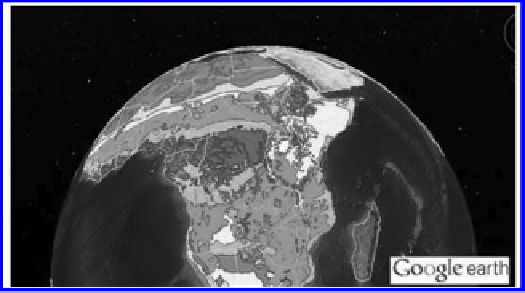Agriculture Reference
In-Depth Information
constraints emerge. These include lack of land in densely populated areas for fallow-
ing, lack of labor for intensive shrub management, lack of water for nursery opera-
tions, and gender considerations when women may manage food production but have
fewer rights to plant trees (Place et al. 2005; Ajayi et al. 2009). Thus, although agro-
forestry has many proven benefits, these benefits may not be well known to all farm-
ers, and adoption is an involved process of working through constraints.
11.1.4 A
groforeStry
P
rActiceS
And
S
mAllholder
c
roPPing
S
yStemS
The cropping systems developed by subsistence farmers depend on the available
natural resource base and the dominant pattern of farm activities (Dixon et al. 2001,
p. 11). Suitable agroforestry technologies vary depending on agroecology and preva-
lent cropping systems.
11.1.4.1 Agroforestry Options
Agroforestry practices may take many forms, and farming practices of African small-
holders tend toward multipurpose mosaics rather than uniform field management.
Thus, the number of useful combinations of crops with agroforestry is constantly
increasing. To facilitate identification of useful tree-crop combinations, researchers
at the World Agroforestry Centre (ICRAF) and the University of Copenhagen have
developed the “Useful Tree Species for Africa” tool (Figure 11.2) in Google Earth,
mapping the prevalence of tree species and linking to a database of their useful
properties (Lillesø et al. 2011).
The largest smallholder farming system in eastern and southern Africa is the
maize mixed system, although the cereal-root crop mixed system involves a similar
number of farmers (Dixon et al. 2001, p. 37; Akinnifesi et al. 2010). Correspondingly,
FIGURE 11.2
“Useful Tree Species for Africa”—online tool for tree species selection.
(From ICRAF. 2012. Useful Tree Species for Africa. [Online]
http://www.worldagroforestry
centre.org/our_products/databases/useful-tree-species-africa;
Lillesø, J.-P.B., P. van Breugel,
R. Kindt, M. Bingham, S. Demissew, C. Dudley, I. Friis, F. Gachathi, J. Kalema, F. Mbago,
V. Minani, H.N. Moshi, J. Mulumba, M. Namaganda, H.J. Ndangalasi, C.K. Ruffo, R. Jamnadass,
and L. Graudal. 2011.
Potential Natural Vegetation of Eastern Africa, Volume 1: The Atlas
.
Forest and Landscape Working Paper 61, University of Copenhagen.)

